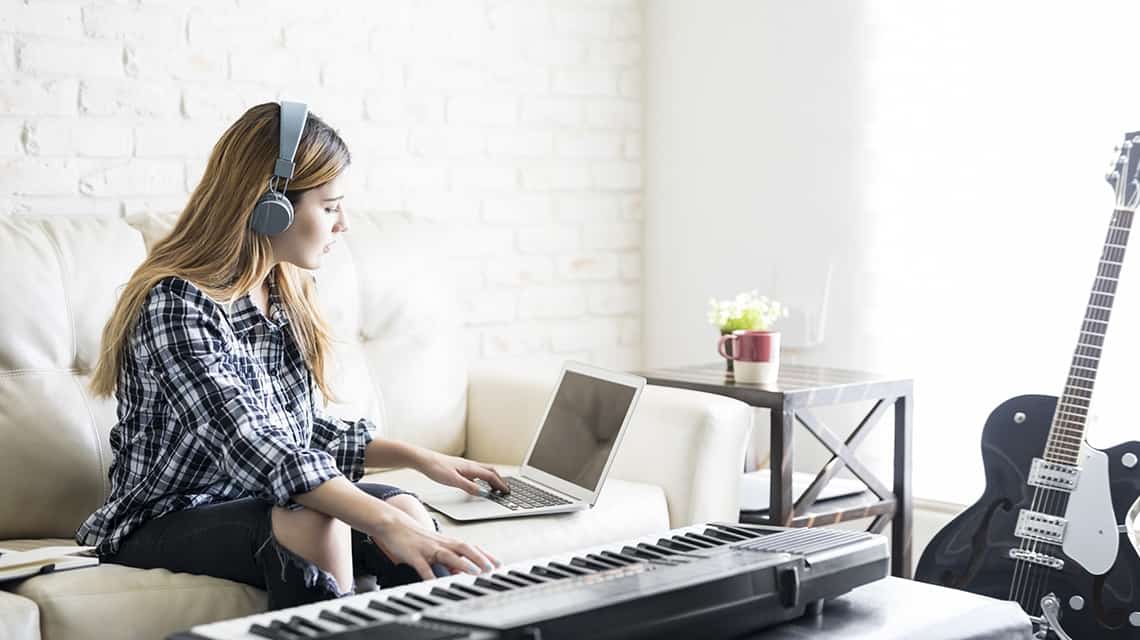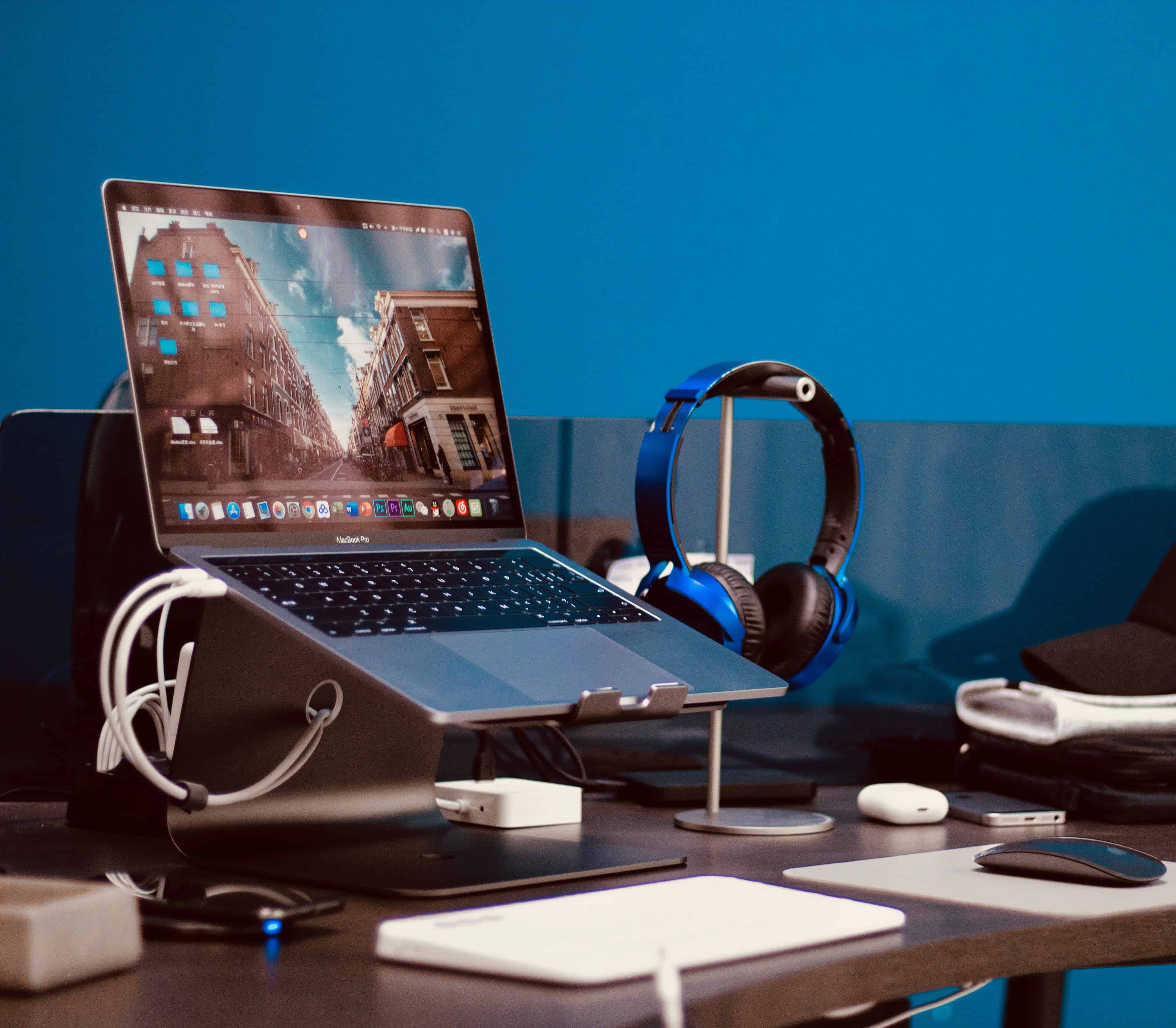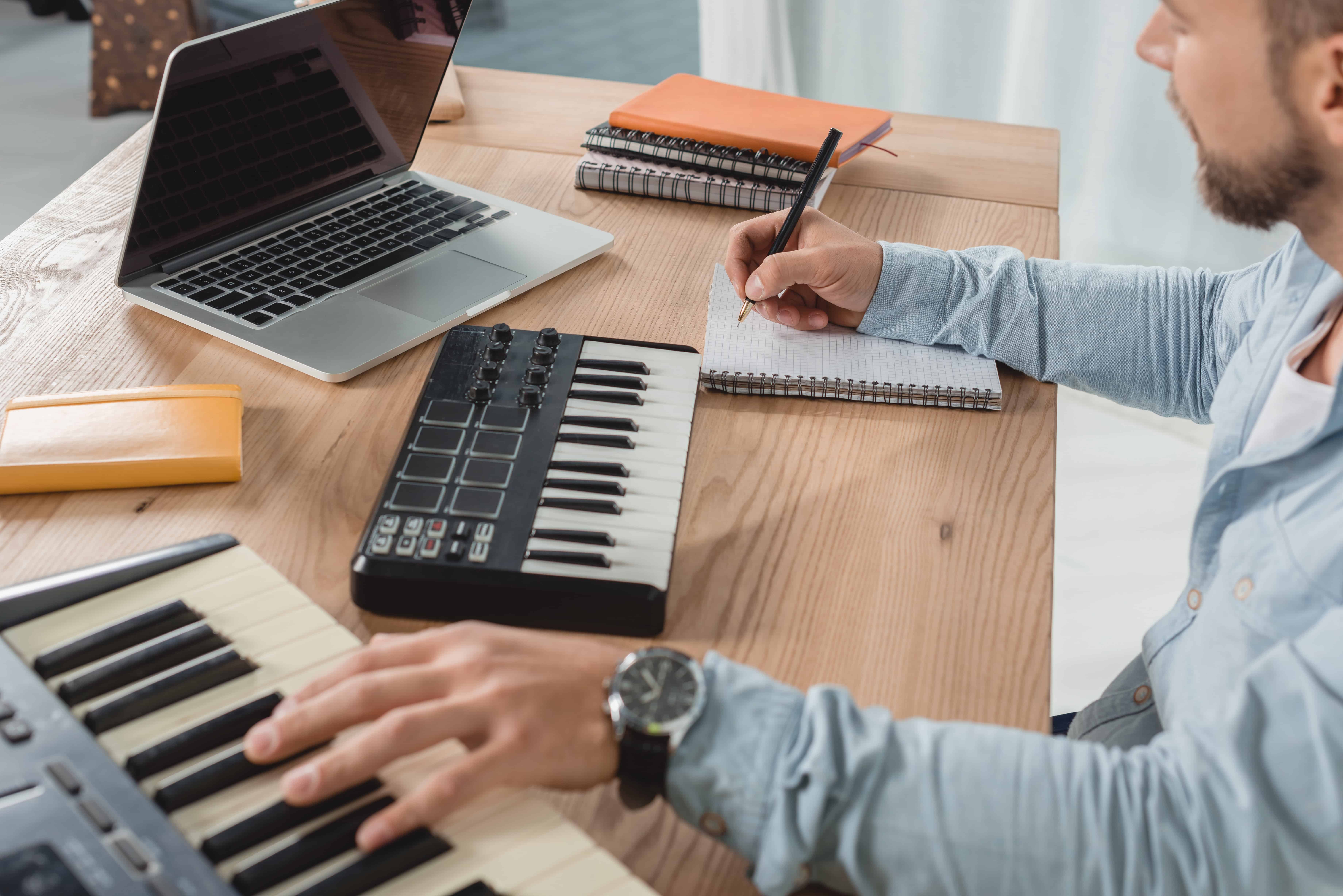How To Teach Piano Lessons Online
During this Coronavirus pandemic, many piano teachers are being forced to move their piano lessons online. Online piano teaching doesn’t have to be difficult or complicated. However, it can feel really intimidating if you have never taught this way before. Fortunately, online piano lessons are not n

During this Coronavirus pandemic, many piano teachers are being forced to move their piano lessons online.
Online piano teaching doesn’t have to be difficult or complicated. However, it can feel really intimidating if you have never taught this way before.
Fortunately, online piano lessons are not new and most people already have everything they need to get started.
As the teacher, remember that the main thing that your students need from you is your eyes, your ears, and your support. You don’t have to have super high-tech equipment, a perfect set-up, or special gear.
As you’re getting started, accept that there will be glitches and technological bumps in the road. This is normal and expected. If you handle them lightly and learn to move on quickly, they will be no big deal.
Here’s everything you need to know for the best way to teach online lessons.
What You Need
The following items are the necessary essentials you will need to start any virtual piano lesson.
- Any device with a built-in camera such as a smartphone, a tablet, or a laptop.
- Your own copy of your student’s music.
- A place to set or prop up your devices such as a music stand, small table, or chair.
The following items are not essential but are extremely helpful for enhancing the learning experience for you and your student.
- Headphones: These allow you to better hear your students and avoid pesky feedback noises from interrupting your virtual piano lessons.
- Tripod: There are all sorts of tripods available with various attachments to hold phones, iPads, or other devices. This will help you find different angles to help you demonstrate techniques on the piano keys.
- External microphone: This allows your students to better hear your voice and your piano. A microphone may be necessary if the speakers on your device have inadequate volume.
- Extra teaching aids: The same aids used for in-person piano lessons are just as helpful for virtual piano lessons. Feel free to use flashcards, dry erase boards, or chalkboards to better showcase your lessons.

Which Platforms To Use
There are a number of different video platforms that you could use for online lessons. Try out a few different options so that you can switch between platforms if needed. Some students may not be able to access the same platform you are on for a variety of reasons.
Here are the most common video chat platforms:
- FaceTime (Apple devices only)
- Google Duo
- Skype
- Zoom
- Facebook Messenger
There are pros and cons to each of these options. They can all have a super clear connection with clean video and audio, or they can all also have a lot of glitches, dropped calls and bad connections. There are a lot of factors that play into the quality of your connection, so it’s best to be familiar with a few different options in case one isn’t working well for you or your student.
While all of these platforms offer free access to online face-to-face chats, you should also look into purchasing plans with increased applications. For example, some platforms allow you to record your online lessons for a small monthly fee. When you feel comfortable teaching more than one student at a time, you can even choose platforms that have increased video storage for multiple users. You can replay recorded lessons to see how you can improve your teaching techniques.
How To Teach
When it comes to the actual teaching, there are a few adaptions that teachers will have to make.
1. Find the Best Set-Up
Take the time at the beginning of your student’s first online lesson to help them find a good set-up so that you can help them the most effectively. Give them instructions on where it would be helpful for them to place their device. Ask them to move it or make changes until you can see everything that you need to see.
2. Alter Your Physical Gestures
In a virtual classroom, you can’t point to your student’s music or to their piano, so you’ll have to replace your normal gestures with words. Teach your students to navigate their music via measure numbers and lines so that you can quickly help them find specific places in their music. You will quickly learn how to rephrase instructions so that students can easily find where to go on the page or on the piano.
3. Hone Your Listening Skills
Without visual cues, you have to listen very carefully. You may or may not have a good view of each hand and all of the keys. You’ll quickly be able to tell if your student is playing incorrect notes, but without seeing everything, you will have to rely on your ear so that you can help them make corrections.
4. Boost Your Demos
When you are teaching online, don’t hesitate to demonstrate your student’s music and show them as much as you can from your own piano. However, you will find it more difficult to play along or to demonstrate very specific concepts. Be creative with how you communicate.
5. Seek Extra Eyes for Younger Students
Online piano lessons can definitely still work with younger piano students, but they may look a little different than in-person lessons. Even if your youngest students normally attend piano lessons independently, you may want to ask a parent or older sibling to be nearby so that they can help the child stay oriented and focused.
6. Add Quick Breaks
Help your younger students find excuses to leave the bench occasionally. It can be difficult for young students to stay in the same place for 30 minutes. Find games, activities, or skills they can do off the bench. Ask them to go get their favorite toy to be the “audience” for their new song. Even just letting them take a quick break to stand up part way through the lesson would be helpful.

What You Might Learn During Online Lessons
As you adjust to virtual piano lessons, there are some surprising things you may learn.
1. Virtual Lessons Can Be the Preferable Method for Some Students
Some students are more focused. Surprisingly, students that are normally easily distracted sometimes do better in an online lesson. With just the screen and their music to focus on, they can be more productive. Virtual lessons are also a way to allow introverted students to feel more comfortable.
2. Online Teaching Can Be More Tiring Than In-Person Lessons
You’ll find that you have to speak up more and stay more focused yourself, so online lessons can be a bit more draining than regular piano lessons. You might be used to getting up and about and moving around during a lesson, but when you are teaching online, you are more confined to the same place. It can be exhausting to sit in the same place in front of a device for long stretches of time.
3. Time Passes Differently During Online Piano Lessons
It’s not necessarily that online lessons move faster or slower, the timing is just different than in-person teaching. Some things might take more time than you expect, while other aspects of the lesson happen more quickly. For instance, correcting hand placement may take more time during a virtual lesson than in an in-person lesson. On the other hand, selecting other music to play can be quicker during an online lesson since virtual sheet music is available.
4. You May Gain a Bigger Understanding of Your Student
Certain habits that your students have will start to make sense. One of the advantages of online piano lessons is that we get to take a peek into our student’s practice environment. You will get to see exactly where and how your students are practicing. You might see benches at incorrect heights (or no bench at all!). You’ll hear pianos that are completely out of tune or have broken keys. You might observe that your student has a lot of distractions where they practice. Sometimes a student’s poor technique or messy playing isn’t their own fault, it is because of the piano they are practicing on. This is all really helpful information for you to know and it will equip you to set your student up for success.
How You Should Prepare Your Online Lesson with a New Student
Here are a few quick tips on what you should do before you start a lesson with a new student.
- Online survey: Sending your student and/or student’s caregiver a survey to find out lesson goals and ideal meet-up times is a great way to set the stage for future lesson planning. You can also use this survey to assess if your student has a suitably prepared area to meet up for virtual piano lessons.
- Online sheet music: Having a variety of online sheet music is a great way to connect with your students and get them to be more engaged. Musicnotes has a wide collection of sheet music that you can access online to show your students. Online sheet music can replace or supplement paper piano lesson books.
- Pre-Lesson Virtual Meet and Greet: Performing a pre-lesson online meet-up is a great way to ensure that there are no technical hiccups during your lessons. This can also help you figure out the best virtual platform to use with your student. You can also use this as an opportunity to assess the current practice area your student has at home and to suggest any improvements for future lessons.
Teaching online piano lessons can be a hard adjustment. As teachers, we thrive on our relationship with our students, and seeing them in person is energizing and important to us.
For now, online lessons are a temporary solution and it is at least encouraging to still have weekly interaction with our students. Plus, we all now have the added benefit of knowing how to teach online piano lessons if we ever need to again in the future on a snow day or in another situation where a student may not be able to travel for a piano lesson.
This guide can make the adjustment to virtual lessons a bit easier. As in-person lessons slowly become more acceptable and available, understanding how to properly execute online lessons can help you increase your student reach for those who prefer their piano lessons online.

